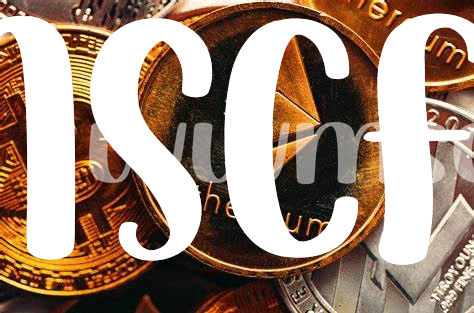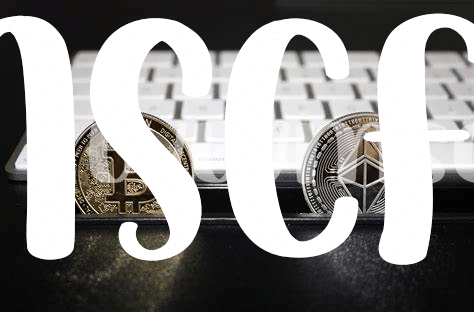The Crypto Chameleon: Understanding Ethereum 🦎

Imagine a creature that can shift its shape and blend into any environment. That’s a lot like Ethereum, a digital platform that’s more than just digital money. It’s a place where people can make agreements, called smart contracts, without needing a middle person. This is a big deal because it can change how we do a lot of everyday things, from buying a house to voting in an election. But what’s really interesting is how different places around the world see Ethereum. Some are all for it, excited about the possibilities, while others are a bit worried and are setting up rules to keep things safe. It’s like a giant global puzzle where everyone is trying to fit their piece.
| Country | Attitude towards Ethereum |
|---|---|
| USA | Regulated with a focus on innovation |
| Europe | Mixed, aiming for unity but respects diversity |
| Asia | Varied, with some countries welcoming and others cautious |
Navigating the Global Map: Ethereum’s Legal Status 🌍
Imagine a world where every country has its own rules for a game; this is pretty much the situation with Ethereum’s legal status across the globe. While in one country, Ethereum might be embraced with open arms, offering a playground for innovation and development, another country might look at it through a lens of skepticism, wrapping it in layers of regulation. This patchwork of policies makes it quite the adventure for anyone trying to navigate the legal landscapes of Ethereum. It’s like being an explorer, trying to find a path through a dense, uncharted jungle, where every step forward could reveal new challenges or opportunities.
In the midst of this global puzzle, there’s a notable contrast between how countries approach Ethereum. Some see it as the future of finance and technology, laying down the red carpet for its growth. Others, cautious about the potential risks, have set up a series of hoops for it to jump through. This diverse approach not only highlights the unique position Ethereum holds in the financial world but also underscores the need for keen insight into how different regions interact with digital currencies. For those looking to dive deeper into the nuances of Ethereum, especially when considering its place against other cryptocurrencies, exploring resources like https://wikicrypto.news/ethereum-vs-bitcoin-the-battle-of-the-cryptocurrencies can provide valuable perspectives.
Usa’s Tightrope: Balancing Innovation and Regulation 🇺🇸

In the US, the balance between fostering innovation, like the cool new developments on Ethereum, and keeping things safe and fair through rules, is a bit like walking a tightrope 🇺🇸🎪. Imagine trying to move forward on a rope high off the ground; it requires careful steps and a lot of focus. That’s how the US approaches Ethereum – eager to see it grow because of its potential to change how we do all sorts of things online, from saving money to buying art. But, just like any exciting new playground, it needs some guardrails to ensure nobody gets hurt. This has led to lots of conversations and debates among those who write the rules, trying to figure out the best path forward. Sometimes, this makes people investing in Ethereum a bit nervous, not knowing if a new rule might come up that changes the game. However, it’s also a sign that Ethereum is taken seriously, and there’s a real effort to make sure it can reach its full potential safely and fairly 🌉🔍.
The European Approach: Unity and Diversity 🇪🇺

Europe stands as a colorful mosaic when it comes to Ethereum, showcasing a vibrant blend of approaches and regulations. Within this tapestry, countries operate somewhat like siblings in a large family – related yet each with their own personalities and rules. On one end, you have nations embracing Ethereum with open arms, keen on fostering innovation and the potential benefits it can bring. These places see Ethereum as a golden ticket to a future where finance and technology dance together in harmony. On the other side, some countries tread with caution, casting a watchful eye over Ethereum’s movements. They’re like the careful gardeners, making sure that while the plant grows, it doesn’t overrun the garden. Despite these differences, there’s an underlying thread of unity, an attempt to find common ground on how Ethereum navigates the legal landscape. This concerted effort aims not just at protecting the users but also at ensuring that the blockchain boom doesn’t turn into a bust. Amidst this, enthusiasts and investors alike must keep a keen eye on the evolving regulations, adapting their strategies accordingly. For those looking to navigate these waters, effective bitcoin trading strategies for volatile markets versus ethereum might offer some insights. Through this lens of unity and diversity, Europe is crafting a narrative that could very well dictate the future of Ethereum on a global stage.
Asia’s Ethereum Puzzle: a Tale of Contrasts 🏯
When it comes to Ethereum, Asia feels like a continent playing a giant game of chess, with each country making its own move. Some places embrace Ethereum, seeing it as a golden opportunity for growth and innovation. They open their doors wide, inviting the future in. Meanwhile, others are more cautious, setting up a bunch of rules to keep things under control. They worry about risks and want to make sure everything stays safe and sound.
| Country | Approach to Ethereum | Key Points |
|---|---|---|
| Japan 🇯🇵 | Friendly | Welcomes innovation, has clear regulations. |
| China 🇨🇳 | Restrictive | Strict controls, focuses on digital yuan. |
| South Korea 🇰🇷 | Cautious Optimism | Supports technology but with regulations. |
| Singapore 🇸🇬 | Progressive | Open for crypto businesses, promotes innovation. |
This contrast paints a vivid picture. On one hand, you’ve got countries racing ahead, keen on becoming leaders in the digital future. On the other, there are those taking it step by step, ensuring every move is safe and secure. This blend creates a fascinating landscape, where the future of Ethereum in Asia is both bright and uncertain, teetering on the edge of innovation and regulation.
Future Forecast: Predicting Ethereum’s Regulatory Weather ☔

Peering into the crystal ball to predict how countries will navigate Ethereum’s regulation is like trying to forecast the weather in a particularly unpredictable climate. Like meteorologists use models to predict the weather, we can analyze current trends to make educated guesses about Ethereum’s regulatory future. Countries around the world are beginning to recognize the potential of Ethereum and other cryptocurrencies, but they’re also wary of the risks they pose. In the United States, efforts to balance innovation with consumer protection could lead to clearer guidelines and supportive policies. Europe, with its blend of unity and diversity, may develop a harmonized approach that accommodates both the technology’s potential and its challenges. Meanwhile, in Asia, we might see a continued mixed bag of regulations, with some countries embracing Ethereum as a cornerstone of digital innovation and others imposing strict controls. The evolving landscape suggests a trend towards greater acceptance and regulation of cryptocurrencies like Ethereum, hinting at a future where they could become an integral part of the global financial system. As we move forward, understanding the nuances of bitcoin versus traditional fiat currencies: a comprehensive comparison versus ethereum will be crucial for anyone looking to navigate this space.
